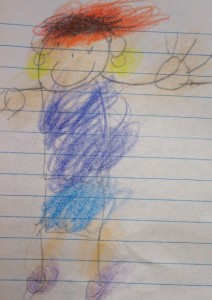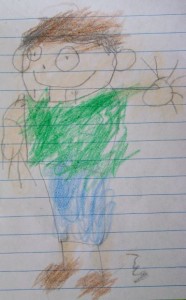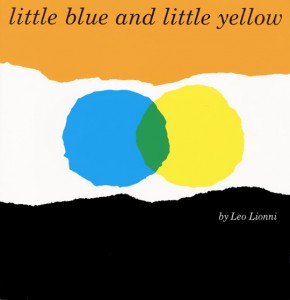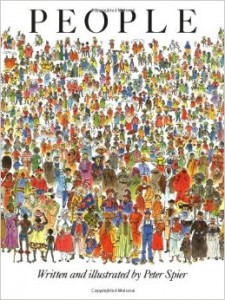 Not only can colors be fun for math, science, and art but also for learning about relationships. Colors can also help with early social skills for kids.
Not only can colors be fun for math, science, and art but also for learning about relationships. Colors can also help with early social skills for kids.
All humans share some common characteristics and each of us has some unique ones. Learning about personal identity will be something that begins in childhood and continues our whole life. A starting point is often the color of hair, eyes, and skin, making our own personal palette.
 When children play and interact with other children in large groups, a common social teaching is everyone is a little the same, and everyone is a little different and it’s what people are like inside that counts.
When children play and interact with other children in large groups, a common social teaching is everyone is a little the same, and everyone is a little different and it’s what people are like inside that counts.
In their early drawings, children will often use any color or their favorites, but will gradually choose ones that are more accurate, reflecting their growing self-awareness.
 In the book, Little Blue and Little Yellow by Leo Lionni, a blue spot and a yellow spot are best friends. After a hug, they turn green which confuses the adult-spots, until the kid-spots show how it happened. Then the adults have a similar experience. Although it is a simple story, there is an underlying message that we are affected by our relationships with others, a life lesson in colors and dots.
In the book, Little Blue and Little Yellow by Leo Lionni, a blue spot and a yellow spot are best friends. After a hug, they turn green which confuses the adult-spots, until the kid-spots show how it happened. Then the adults have a similar experience. Although it is a simple story, there is an underlying message that we are affected by our relationships with others, a life lesson in colors and dots.
 Another story about people and colors is the book People by Peter Spier. Detailed illustrations show an amazing variety of colors for eyes, hair, skin, clothing, buildings, and more. Filled with hundreds of finely painted images, Peter Spier says, “You have to tell the story in the drawings.” One image shows a world that is mostly the same, with very few differences, and is quite boring. The opposite image vibrates with all the differences of colors, shapes, and sizes. The message in this book is that differences are not just okay, but really rather wonderful.
Another story about people and colors is the book People by Peter Spier. Detailed illustrations show an amazing variety of colors for eyes, hair, skin, clothing, buildings, and more. Filled with hundreds of finely painted images, Peter Spier says, “You have to tell the story in the drawings.” One image shows a world that is mostly the same, with very few differences, and is quite boring. The opposite image vibrates with all the differences of colors, shapes, and sizes. The message in this book is that differences are not just okay, but really rather wonderful.
Can some fun and play with colors, color the day for you and your child?
